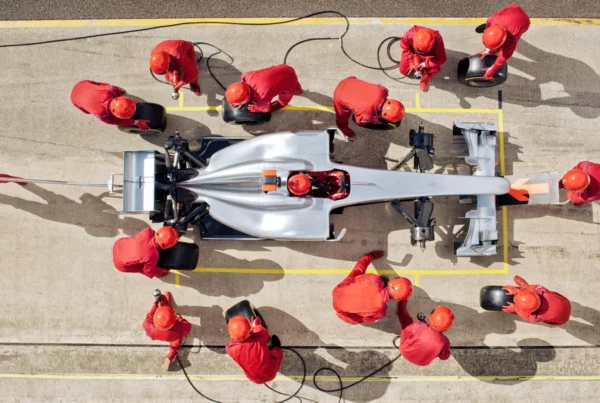The Daily Meeting is perhaps the most popular cadence in our market, being widely used by those looking to follow an agile approach to product and service development.
But, on the other hand, it is also the one that most easily loses its effectiveness and distances itself from its real purpose. The vast majority of teams reap a little benefit from this encounter.
What is Daily Meeting?
The daily meeting is an alignment meeting lasting up to 15 minutes. The purpose is to bring the entire team together regularly to share information and update each other.
From it, it is possible to reorganize and redirect collective efforts to the right places, removing obstacles in the track and enhancing results.
I would like to suggest a guide with some questions to keep in mind during your metting to help make it more effective, regardless of the method or structure you use today:
9 questions to improve your Daily Meeting
#1 Do we have real visibility of our current situation?
We organize ourselves better and make good decisions about what we see. We need to ensure that we have adequate visibility into all existing work in progress. Therefore, the first thing to check is whether the photo we are seeing in the frame now reflects the reality of the moment.
You may naturally to realize that you need to improve your visual cues. Not all the stages are mapped, the queues are hidden, the blocks are not marked, and the priorities are not clear on the cards. All this makes it difficult for us to have an easy and quick view of our current situation, making the daily meeting more costly and hindering decision-making.
If that’s the case, you can gradually improve these signs according to the information that you realize is relevant to have visually available.
#2 Are there emergency demands?
Those demands whose impact generated by not delivering them rises dramatically over time need to receive maximum attention. Because they represent a critical situation and a big risk for the business, you need to get organized to resolve them as quickly as possible.
A suggestion to classify demands according to their risk profiles and to more easily identify those that are truly emergencies is to use the concepts of Classes of Service.
#3 What can be done today (or as close to that)?
We need to focus on completing things before we start new ones. Therefore, the demands closest to completion are those that should gain more attention and energy from the team. Among so many benefits, this accelerates the return on investment.
“Stop starting and start finishing!”
A good dynamic to exercise is to focus first on those items that are closer to the end of the flow, that is, more to the right of the frame. We can start by asking what we can do as a team to get these demands completed today or as close to that as possible.
#4 Are there demands with impediments?
Blockages interrupt the flow of demands, generate delays and impact your performance, reducing the efficiency of your process. They are obstacles that prevent us from achieving our goals and cannot be ignored. Therefore, once identified, create a plan to resolve them as soon as possible.
Later, you can perform a deeper analysis of these blockages in order to avoid them in the future or reduce their incidence, contributing to a more efficient flow. A good suggestion is to use the Blocker Clustering technique.
#5 Do we have more work than we should in the stream?
The main ingredient for inefficiency is overload. The excess of work may be with a specific person or forming a bottleneck at some stage of the flow. Look for ways to reorganize this work in the team and tackle bottlenecks to maintain better fluidity.
In parallel with this, you need to avoid committing to more demands, keeping your work in progress (WIP) within healthy limits and adequate to your capacity.
#6 Are there forgotten demands in the flow?
Especially in high WIP environments or with many reprioritizations, it is quite common to have demands that end up being forgotten somewhere in the flow.
Always try to keep these demands under the radar and don’t let them linger in this situation, assessing whether they should be resumed, or discarded.
#7 Do we need to replan any demand?
The plan needs to adjust to reality as time progresses. Discoveries are made, problems are found and a new situation is drawn in front of us.
Check if the new information identified impacts the current delivery plan, if commitments need to be revised or if demands need to be reprioritized.
Don’t forget to notify all necessary people about the changes.
#8 Are there new demands to be pulled?
Observe if there are new demands available in the queue to be pulled when there is capacity.
If a possible resupply is needed soon, signal that special attention be paid to refinement and preparation of new demands. The aim is to make them available at the right time, thus avoiding idleness and flow starvation.
#9 Is it clear to everyone what each needs to do next?
Finally, a quick check to make sure everyone knows exactly what they need to do right after the meeting ends. It needs to be clear to everyone how the team should organize itself during the day.
Each of these issues helps you better manage workflow, maintain transparency and alignment, improve engagement, minimize risk, and increase your efficiency.
With time and practice, you should find the best way to run a meeting where all these questions naturally get answered. And you will soon begin to see the benefits of this approach.
Very good luck and success! 😉
João Paulo Grabosque, Coach Agile at BRQ





